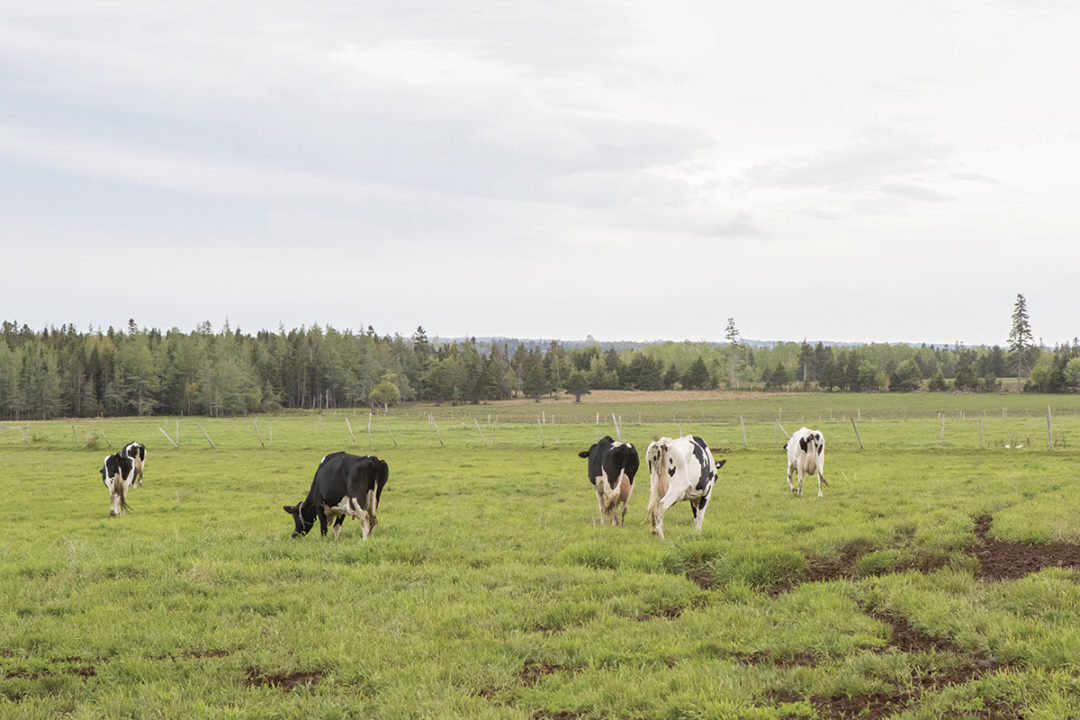To read this article in French, click here.
Who knew cow farts would feature so prominently in the controversy and critiques aimed at the livestock industry? Besides the fact this points a misguided finger at the source of enteric methane emissions produced by cattle (99% of enteric methane emitted by cows is released through their mouth and nostrils), it tends to oversimplify a complex sustainability issue.
Yes, cattle are significant contributors to global emissions. Methane produced through enteric fermentation accounts for 44% of the livestock sector’s greenhouse gas (GHG) emissions, and the sector itself emits 14.5% of human-induced GHG emissions, plus methane possesses a higher warming potential than carbon dioxide. However, as Chaouki Benchaar explained during his presentation, “Nutritional strategies to mitigate enteric methane emissions from dairy cows,” at the Animal Nutrition Conference of Canada (ANCC), there is more to the story.
“Methane has a much shorter lifetime than CO2 in the atmosphere, and this difference makes methane an attractive target for short-term gains in global warming reduction,” Benchaar noted.
To reach the emission reductions put forth by the IPCC report published in 2018, and achieve methane reductions of 24% to 27%, mitigation strategies are more important than ever. The good news is: There are opportunities available to target and reduce enteric
methane emissions.
In Canada, 90% of methane emissions produced by the livestock sector are attributed to enteric fermentation, with the remaining 10% coming from manure. The country’s dairy industry is responsible for 15% of these emissions.
“Mitigation of enteric methane emissions from dairy cattle could play an important role in stabilizing and reducing greenhouse gas emissions by the dairy sector,” Benchaar, a research scientist with Agriculture and Agri-Food Canada, said.
Fermentation function
Microbial fermentation of feed is the driver of methane production by the rumen. This enteric fermentation produces volatile fatty acids (VFAs), namely acetate, propionate and butyrate, an energy source for the animal. Fermentation also stimulates the production of carbon dioxide and hydrogen gases which are used by microorganisms called methanogens to produce methane.
As carbohydrates ferment in the rumen, the key elements of the rumen’s methane production process are produced, including the above-mentioned acetate, butyrate and hydrogen.
Feeding diets high in fibre, such as high-forage diets, encourage methane production through their role in increasing the availability of hydrogen. This differs from high-starch diets which promote the production of propionate during rumen fermentation, resulting in a reduction in methane formulation in the rumen.
Productivity thief
To produce methane, ruminants exert productive energy. This means the production of enteric methane steals productive energy from more favourable processes, like the production of milk. For dairy cows fed forage-based diets, the energy lost to methane production equates to 4% to 7% of the animal’s gross energy intake. Thus, the nature of methane as a potent GHG, in addition to the energy loss it creates, results in the possibility for both long-term environmental benefits and short-term economic benefits through the mitigation of methane production by dairy cows.
Tools at your disposal
With the benefits of reduced enteric methane emissions established, a look at the solutions to unlock these potential benefits is needed.
A dairy cow’s diet is a major factor in its production of methane emissions and is also a factor over which farms have a considerable amount of control, acknowledging that region, input and feed costs, access to resources, and animal and herd variation make certain feed decisions unfeasible.
The first thing to consider is dry matter intake (DMI). DMI is linked to the volume of enteric methane a cow produces. On average, dry cows produce 200 litres per day of methane emissions, while lactating dairy cows averaging 40 kilograms of milk production per day will produce roughly 700 litres of methane emissions each day.
Table 1 examines how variations in some common dairy cow diets can influence methane emissions per kilogram of milk produced.

Supplementing, swapping out or modifying some components can cause considerable variation in methane production.
Things to watch for
Beyond modifications to conventional dairy cow nutrition practices, a few opportunities – poised to serve as future solutions for the industry – exist to reduce enteric methane production.
Feed additives present some interesting opportunities for the reduction of enteric methane emissions; however, there are many barriers facing the adoption of these additives.
-
Inhibitors: Additives such as 3-NOP are proven to be effective in reducing enteric methane emissions with low impacts on human and animal health, yet there is a high cost associated with them. They are also not correlated to any gains in animal productivity. 3-NOP is not approved for use in Canada and is not anticipated to be available for several years.
- Seaweed: A variety of red seaweed called asparagopsis is found to decrease daily methane emissions by 67% when added to the diet at a rate of 1%. More work is needed to make this a viable option for producers. It is highly costly, can be harmful at high concentrations, is not native to Canada, may adversely impact DMI and milk production, and utilizes the probable carcinogen bromoform.
Actions you can take today
Although there is progress yet to be made on many enteric methane reduction fronts, including a lack of financial incentive to implement many proposed solutions, Benchaar confirmed there are still changes that can be made today to reduce enteric methane emissions, specifically in diet formulation.
“Any diet manipulation that can increase DMI and/or milk production may result in a decrease in emissions and methane intensity,” he noted. To support his argument, he cited the potential of replacing soybean meal with canola meal in the diet. Studies show this may increase DMI and milk production while decreasing methane production by at least 6% and improve animal productivity.
Furthermore, it may be beneficial to combine some of the tools available to maximize emission reduction potential. “It has been suggested that combined mitigation strategies may allow you to achieve larger reductions [in enteric methane emissions]. However, these will only be achieved if the combined strategies are additive,” Benchaar explained.
In conclusion, while the need to reduce enteric methane emissions is well established, it is not the sole solution to decreasing the carbon footprint of livestock production. Globally, milk provides 33% of the world’s protein and is an important source of nutrition, not only calories, for many populations. As such, life cycle assessments are necessary to ensure methane reductions in some areas do not lead to increases in other GHG emissions elsewhere in the farm system.










